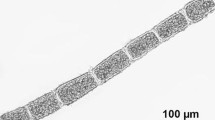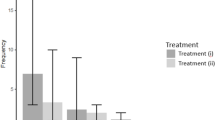Abstract
The efficacy of seawater-extracted fresh and decomposing blue crab (Callinectes sapidus) claw muscle homogenates as stimulants of feeding behavior by the ghost crab (Ocypode quadrata) was tested with cheliped flexion as a bioassay. Stimulatory components of extracts were heat-stable and <1 kDa. Fresh seawater extracts of muscle tissue homogenate elicited the most responses and decreased in efficacy with decomposition. Ultrafiltrates <1 kDa also became less stimulating with increasing decay of the homogenate. When ultrafiltrates were extracted with ethyl ether, the aqueous phase elicited the most responses. To some degree, active components were soluble in ether. Ion-exchange chromatography of the aqueous phase yielded eluates containing neutral and acidic compounds, which, following a peak in activity, became less stimulatory over time. In contrast, eluates containing amphoteric and basic compounds remained highly effective throughout bacterial degradation. However, their activity was significantly suppressed when they were mixed with neutral and acidic compounds isolated from the same samples. Mixture suppression may function as a mechanism ensuring the consumption of high-quality foods. The ability of O. quadrata to respond to both fresh and decomposing tissues contributes to this species' flexibility in foraging strategies and its success as an inhabitant of sandy beaches.
Similar content being viewed by others
REFERENCES
Ache, B. W. 1977. Aspects of chemoreception in marine Crustacea, pp. 343-350, in J. LeMagnen and P. MacLoed (eds.). Olfaction and Taste VI, Information Retrieval, Ltd., London.
Ache, B. W. 1982. Chemoreception and thermoreception, pp. 369-398, in H. L. Atwood and D. C. Sandeman (eds.). The Biology of Crustacea, Vol. 3, Neurobiology: Structure and Function. Academic Press, New York.
Ache, B. W., Fuzessary, Z. M., and Carr, W. E. S. 1976. Antennular chemoreception in the spiny lobster, Panulirus argus: Comparative tests of high and low molecular weight stimulants. Biol. Bull. 151:273-282.
Atema, J. 1977. Functional separation of smell and taste in fish and Crustacea, pp. 165-174, in J. LeMagnen and P. MacLeod (eds.). Olfaction and Taste VI. Information Retrieval, Ltd., London.
Bardach, J. E. 1975. Chemoreception of aquatic animals, pp. 121-132, in D. A. Denton and J. P. Coghlan (eds.). Olfaction and Taste V. Academic Press, New York.
Boone, L. 1934. Scientific results of the world cruise of the yacht “Alva”, 1931, William K. Vanderbuilt, Commanding. Crustacea: Stomatopoda and Brachyura. Bull. Vanderbuilt Mar. Mus. 5:1-210.
Brooks, J. B., and Moore, W. E. C. 1969. Gas chromatographic analysis of amines and other compounds produced by several species of Clostridium. Can. J. Microbiol. 15:1433-1447.
Carr, W. E. S. 1978. Chemoreception in the shrimp, Palaemonetes pugio: The role of amino acids and betaine in elicitation of a feeding response by extracts. Comp. Biochem. Physiol. 61A:127-131.
Carr, W. E. S., and Derby, C. D. 1986. Chemically stimulated feeding behavior in marine animals. The importance of chemical mixtures and the involvement of mixture interactions. J. Chem. Ecol. 12:989-1011.
Carr, W. E. S., and Gurein, S. 1975. Chemoreception in the shrimp, Palaemonetes pugio: Comparative study of stimulatory substances in human serum. Biol. Bull. 148:380-392.
Cavanaugh, G. M. 1956. Formulae and Methods IV of the Marine Biological Laboratory chemical room. Marine Biological Laboratory, Woods Hole, Massachusetts.
Charnov, E. L. 1976. Optimal foraging, the marginal value theorem. Theor. Popul. Biol. 9:129-136.
Cowles, R. P. 1908. Habits, reactions, and associations in Ocypode arenaria. Carnegie Institution of Washington Publication Number 103. Papers from the Tortugas Laboratory of the Carnegie Institution of Washington, Washington, D.C. Volume 2,Number 1, pp. 1-41.
Daniel, P. C., and Bayer, R. C. 1987. Temporal changes in release rates and quality of lobster (Homarus americanus) feeding attractants from herring (Clupea harengus) baits. Mar. Behav. Physiol. 13:13-27.
Derby, C. D. 1984. Molecular weight fractions of natural foods that stimulate feeding in crustaceans, with data from the lobster Homarus americanus. Mar. Behav. Physiol. 10:273-282.
Elsden, S. R., and Hilton, M. G. 1978. Volatile acid production from threonine, valine, leucine, and isoleucine by Clostridia. Arch. Microbiol. 117:165-172.
Fales, R. R. 1976. Apparent predation on the mole crab Emerita talpoida (Say) by the ghost crab Ocypode quadrata (Fabricius). Chesapeake Sci. 17:65.
Johnson, B. R., and Ache, B. W. 1978. Antennular chemosensitivity in the spiny lobster, Panulirus argus: Amino acids as feeding stimuli. Mar. Behav. Physiol. 5:145-157.
Lewis, V. J., Moss, C. W., and Jones, W. L. 1967. Determination of volatile acid production of Clostridium by gas chromatography. Can. J. Microbiol. 13:1033-1040.
Loesch, H. C. 1957. Studies on the ecology of two species of Donax on Mustang Island, Texas. Publ. Inst. Mar. Sci. 4:201-227.
Mackie, A. M., and Shelton, R. G. J. 1972. A whole-animal bioassay for the determination of food attractants of the lobster Homarus gammarus. Mar. Biol. 14:217-221.
McLeese, D. W. 1973. Orientation of lobsters (Homarus americanus) to odors. J. Fish. Res. Bd. Can. 30:838-840.
McLeese, D. W. 1974. Olfactory responses of lobsters (Homarus americanus) to solutions from prey species and to seawater extracts and chemical fractions of fish muscle and effects of anneunule ablation. Mar. Behav. Physiol. 2:237-249.
Milne, L. J., and Milne, M. J. 1946. Notes on the behavior of the ghost crab. Am. Nat. 80:362-380.
Moore, W. E. C., Cato, E. P., and Holdeman, L. V. 1966. Fermentation patterns of some Clostridium species. Int. J. Syst. Bacteriol. 16:383-415.
Pearse, A. S. 1929. Observations of certain littoral and terrestrial animals at Tortugas, Florida, with special reference to migrations from marine to terrestrial habitats. Carnegie Institution of Washington Publication Number 391. Papers from the Tortugas Laboratory at the Carnegie Institution of Washington, Washington, D.C. Volume 26,Number 6, pp. 205-223.
Phillips, A. M. 1940. The ghost crab. Nat. Hist. 46:36-41.
Rittschof, D. 1980. Enzymatic production of small molecules attracting hermit crabs to simulated gastropod predation sites. J. Chem. Ecol. 6:665-675.
Robertson, J. R., and Pfeiffer, W. J. 1982. Deposit-feeding by the ghost crab Ocypode quadrata (Fabricius). J. Exp. Mar. Biol. Ecol. 56:165-177.
Sokal, R. R., and Rohlf, F. J. 1981. Biometry. W. H. Freeman and Company, New York.
Trott, T. J., and Robertson, J. R. 1984. Chemical stimulants of cheliped flexion behavior by the western Atlantic ghost crab Ocypode quadrata (Fabricius) J. Exp. Mar. Biol. Ecol. 78:237-252.
Wade, B. A. 1967. Studies on the biology of the west Indian surf clam, Donax denticulatus Linné. I. Ecology. Bull. Mar. Sci. 17:149-174.
Wolcott, T. G. 1978. Ecological role of ghost crabs, Ocypode quadrata (Fabricius), on an open beach: Scavengers or predators? J. Exp. Mar. Biol. Ecol. 31:67-82.
Zar, J. H. 1996. Biostatistical Analysis. Prentice-Hall, Englewood Cliffs, New Jersey.
Zimmer-Faust, R. K. 1987. Crustacean chemical perception: Towards a theory of optimal chemoreception. Biol. Bull. 172:10-29.
Zimmer-Faust, R. K., and Case, J. F. 1982. Odors influencing foraging behavior of California spiny lobster, Panulirus interruptus, and other decapod Crustacea. Mar. Behav. Physiol. 9:35-58.
Zimmer-Faust, R. K., Michel, W. C., Tyre, J. E., and Case, J. F. 1984. Chemical induction of feeding behavior in California spiny lobster, Panulirus interruptus (Randall): Responses to molecular weight fractions of abalone. J. Chem. Ecol. 10:957-971.
Author information
Authors and Affiliations
Rights and permissions
About this article
Cite this article
Trott, T.J. Gustatory Responses of Ghost Crab Ocypode quadrata to Seawater Extracts and Chemical Fractions of Natural Stimuli. J Chem Ecol 25, 375–388 (1999). https://doi.org/10.1023/A:1020859115984
Issue Date:
DOI: https://doi.org/10.1023/A:1020859115984




